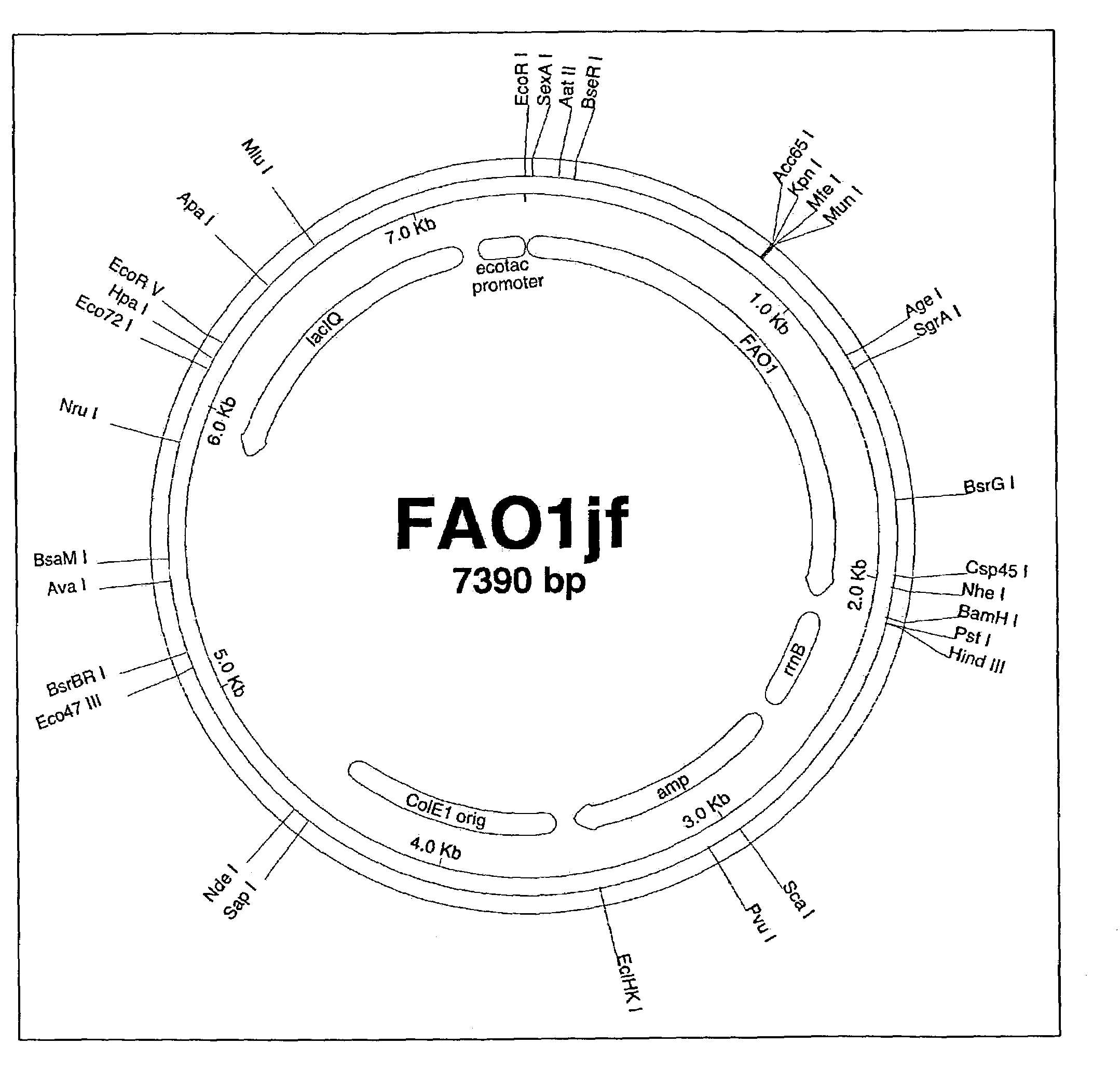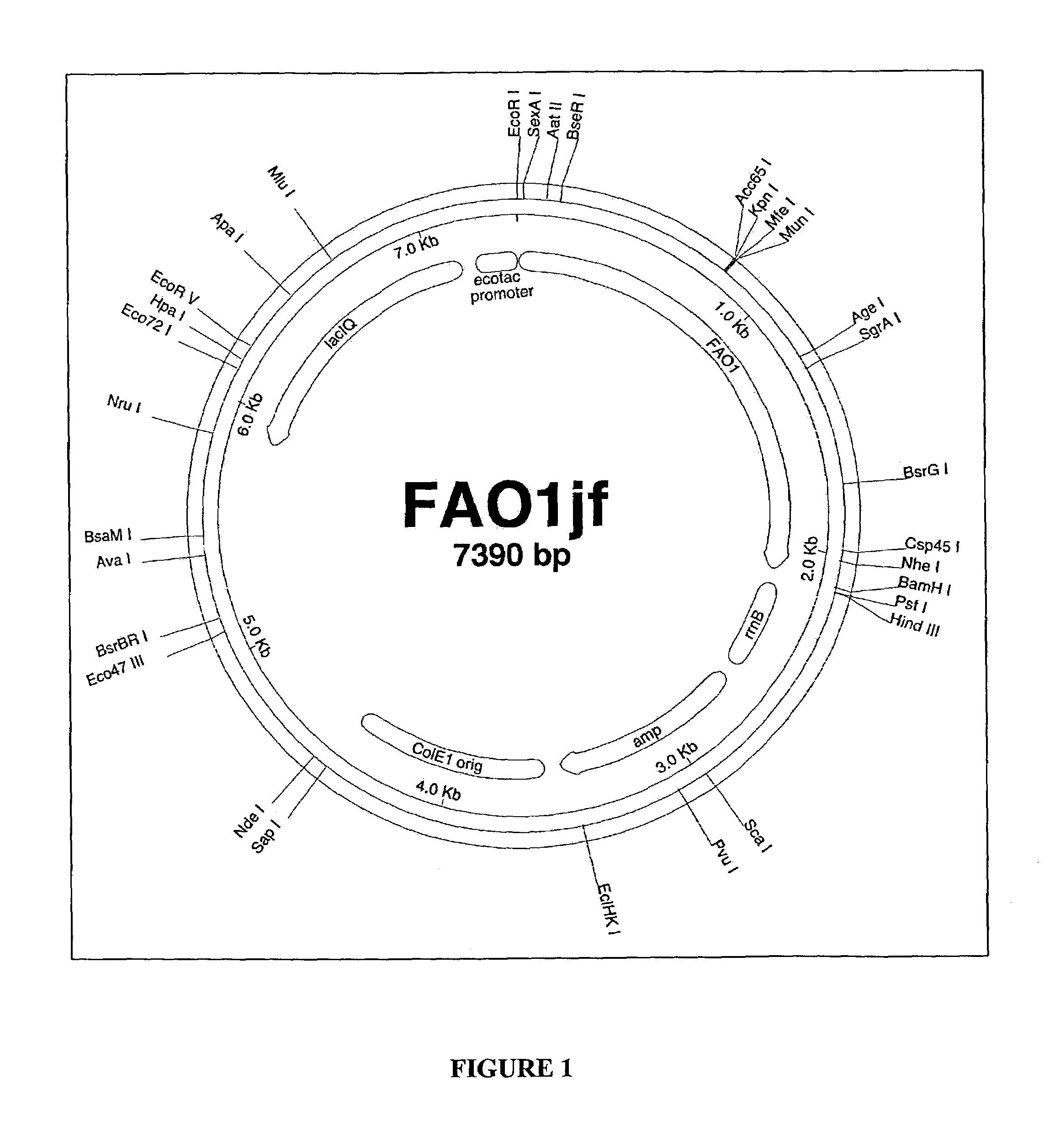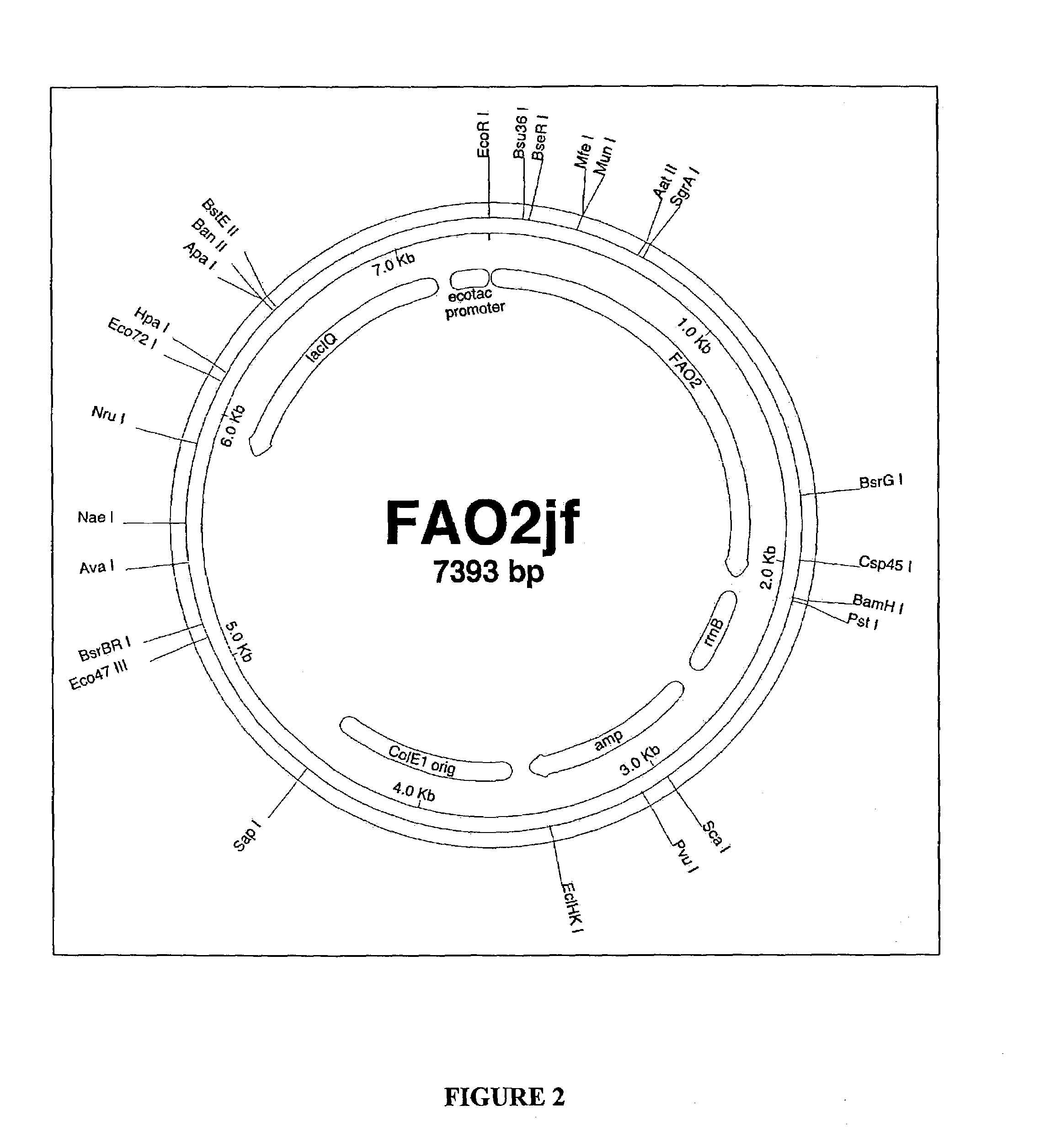Fatty alcohol oxidase genes and proteins from Candida tropicalis and methods relating thereto
a technology genes, applied in the field of fatty alcohol oxidase genes and proteins from candida tropicalis, can solve the problems of low overall yield, achieve the effects of increasing the production of aldehyde, and increasing the production of dicarboxylic acid
- Summary
- Abstract
- Description
- Claims
- Application Information
AI Technical Summary
Benefits of technology
Problems solved by technology
Method used
Image
Examples
example 1
Materials and Methods
Transformation of C. tropicalis Using Lithium Acetate
[0173]The following protocol was used to transform C. tropicalis in accordance with the procedures described in Current Protocols in Molecular Biology, Supplement 5, 13.7.1 (1989) Frederick M. Ausubel, Roger Brent, Robert E. Kingston, David D. Moore, J. G. Seidman, John A. Smith, and Kevin Struhl, eds., John Wiley and Sons, Hoboken, N.J. 5 ml of YEPD was inoculated with C. tropicalis H5343 ura- and incubated overnight on a New Brunswick shaker at 30° C. and 170 rpm. The next day, the overnight culture was used to inoculate 50 ml YEPD at an OD600 of 0.2 and growth was continued at 30° C., 170 rpm. The cells were harvested at an OD600 of 1.0. The culture was transferred to a 50 ml polypropylene tube and centrifuged at 1000×g for 10 min. The cell pellet was resuspended in 10 ml sterile TE (10 mM Tris-Cl and 1 mM EDTA, pH 8.0). The cells were again centrifuged at 1000×g for 10 min and the cell pellet was resuspend...
example 2
Cloning of Fatty Alcohol Oxidase Genes
Preparation of Genomic DNA
[0181]50 ml of YPD broth (Difco) was inoculated with a single colony of C. tropicalis 20336 from a YPD agar (Difco) plate and was grown overnight at 30° C. 5 ml of the overnight culture was inoculated into 100 ml of fresh YPD broth and incubated at 30° C. for 4 to 5 hr with shaking. Cells were harvested by centrifugation, washed twice with sterile distilled water and resuspended in 4 ml of spheroplasting buffer (1 M Sorbitol, 50 mM EDTA, 14 mM mercaptoethanol) and incubated for 30 min at 37° C. with gentle shaking. 0.5 ml of 2 mg / ml zymolyase (ICN Pharmaceuticals, Inc., Irvine, Calif.) was added and incubated at 37° C. with gentle shaking for 30 to 60 min. Spheroplast formation was monitored by SDS lysis. Spheroplasts were harvested by brief centrifugation (4,000 rpm, 3 min) and were washed once with the spheroplast buffer without mercaptoethanol. Harvested spheroplasts were then suspended in 4 ml of lysis buffer (0.2 M...
example 3
Cloning of FAO Genes from Candida tropicalis ATCC 20336
[0195]Plates of the λ phage library of C. tropicalis were made and lifts of these plates onto nitrocellulose membrane filters were performed, following the procedure described in Materials and Methods (Example 1). Putative positive clones were identified as outlined in Materials and Methods (Example 1). The XLOLR cells containing these library fragments were grown up and plasmid DNA was obtained using the Qiaprep kit. Restriction digest and PCR analyses confirmed the presence of an FAO gene in these C. tropicalis library clones. It was known from the sequence information of the probe DNA that at least some of the clones should cut with PvuII and KpnI. Therefore, the library clones were digested with EcoRI, PvuII, and KpnI in single digests, and with PvuII and KpnI in a double digest. This allowed the direction of the FAO gene to be determined and its placement within the insert of the PBK-CMV vector to be estimated. The initial...
PUM
| Property | Measurement | Unit |
|---|---|---|
| pH | aaaaa | aaaaa |
| pH | aaaaa | aaaaa |
| temperature | aaaaa | aaaaa |
Abstract
Description
Claims
Application Information
 Login to View More
Login to View More - R&D
- Intellectual Property
- Life Sciences
- Materials
- Tech Scout
- Unparalleled Data Quality
- Higher Quality Content
- 60% Fewer Hallucinations
Browse by: Latest US Patents, China's latest patents, Technical Efficacy Thesaurus, Application Domain, Technology Topic, Popular Technical Reports.
© 2025 PatSnap. All rights reserved.Legal|Privacy policy|Modern Slavery Act Transparency Statement|Sitemap|About US| Contact US: help@patsnap.com



